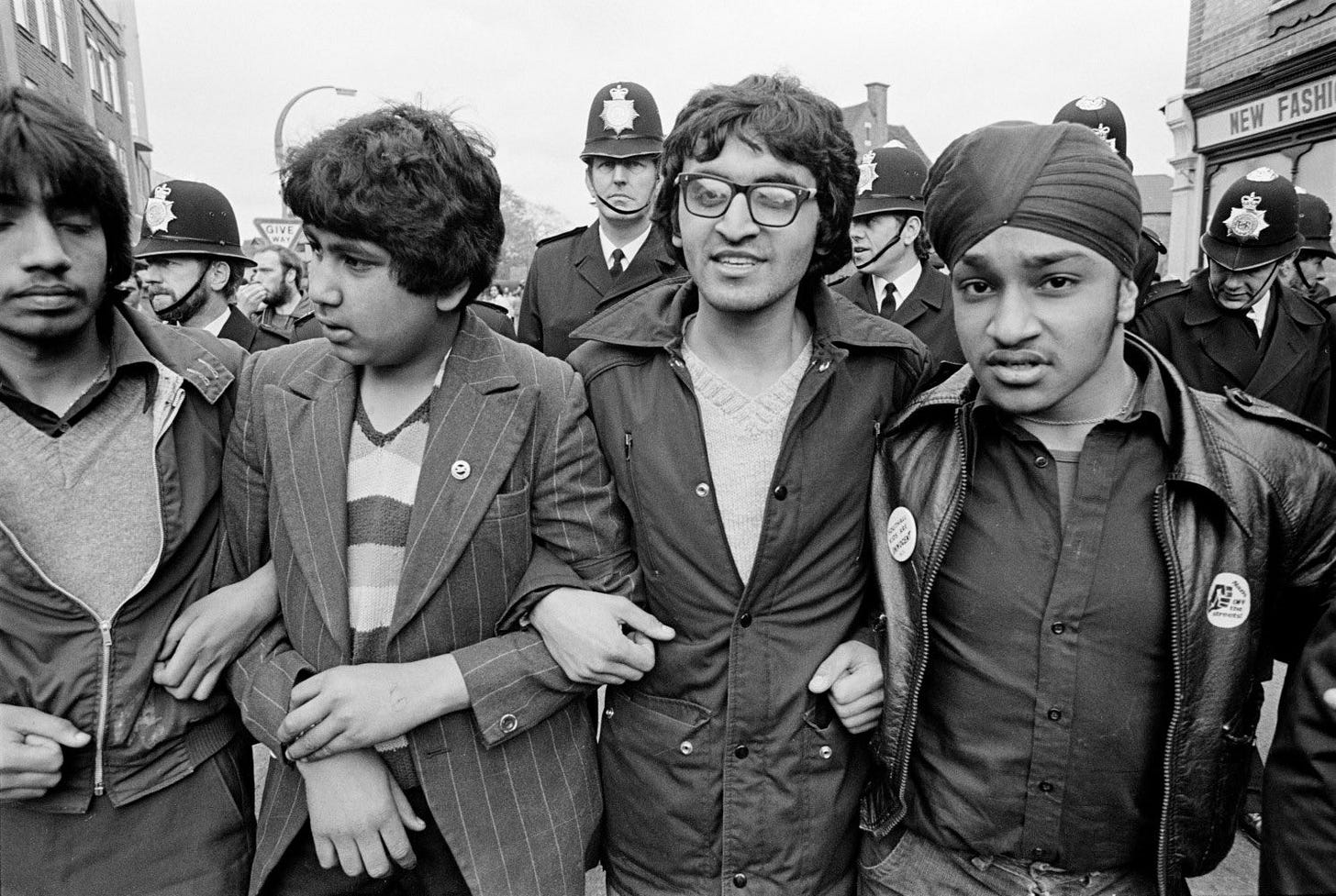Southall's Sikh Spirit Of Resistance
"The significant Sikh community of Southall was seen as a trendsetter in how they began dealing with racist abuse and attacks in 1976 after the murder of teenager Gurdip Singh Chaggar..."
Jasveer Singh
May 14, 2024 | 3.5 min. read | Analysis
Defiance, a recent three-part Channel 4 documentary, gave the UK a mainstream insight into the history of Southall. Without being overtly said, it also showed modern examples of the Sikh spirit of resistance.
The widely acclaimed documentary uses witness interviews and historical footage to look back at various incidents in the 1970s and 1980s, which signaled a new attitude of defiance from the British Asian community in the face of violent racism - including several incidents from 1976 to 1981 in Europe’s mini-Punjab of Southall.
What is apparent throughout the story is the role Sikhi plays in this stand of resistance.
The significant Sikh community of Southall was seen as a trendsetter in how they began dealing with racist abuse and attacks in 1976 after the murder of teenager Gurdip Singh Chaggar - an event which led to the formation of the Southall Youth Movement (SYM).
In the documentary's opening intro, SYM founder Balraj Purewal cites what he calls “a Punjabi phrase” regarding why the group was formed:
“When all other methods have failed, it is righteous to raise the sword.”
This is not a Punjabi cultural phrase, of course, but rather the words of Guru Gobind Singh Ji, taken from His famed wartime letter to Mughal emperor Aurangzeb known as the Zafarnama.
This philosophy of the 10th Sikh Guru is arguably at the heart of all Sikh and Punjabi movements of resistance, even for those who do not know it. The idea that members of the SYM may have just been unaware of the Sikh essence of their defiance is negated by footage in the documentary showing a picture of Guru Gobind Singh Ji on the wall of a gym the group set up to stay physically fit enough to fend off groups like the National Front who sought to go “Paki bashing” in towns like Southall.
The reaction from Southall, which stood against the racist murder of Chaggar, was also led by Sikh community figures, such as the globally respected Giani Amolak Singh, who was at the forefront of demonstrations challenging racist political rhetoric and lack of police action. Furthermore, it is well known within the Southall community that Gurdwaras served as meeting spaces for organising against racist abusers.
Sikhs leading the anti-racist resistance in the UK were not just confined to Southall, though, as there was a significant level of them involved in such movements across the British Asian community.
The documentary also detailed the historic case of the Bradford 12 in 1982, which saw the likes of Tarlochan Gata-Aura on trial for leading a self-defence campaign against racists which involved stockpiling petrol bombs. When the defendants – which included non-Sikhs, underlining a unity between British Asians – were found not guilty, the national reaction included Sevadars of a Bradford Gurdwara serving langar to celebrators on the street.
These examples of UK racism meeting the Sikh spirit of resistance could spawn several more documentaries.
The 1978 case of the Virk brothers from East London saw a Sikh family suffer due to the English judicial system after a racist group ended up on the wrong side of an attack on the four Virk brothers, who were between 18-27 years old. But their defiance was supported by a national campaign advocating for their right to self-defence, which the courts did not recognise.
Going even further back, Sikh shopkeepers of the Midlands made headlines in 1966 when a group in Leamington Spa decided to begin a shotgun patrol around their businesses to fend off ongoing racist attacks, with the Birmingham Daily Post declaring “Sikhs plan gun patrol.” Doing such a thing was, of course, illegal in the UK, but such was the Sikh ethical conviction that the move against police inaction was seemingly accepted by locals.
Countless other migrant communities have similar stories of resistance.
Pakistanis were a prominent part of the movements in Bradford, whilst the 1981 Brixton stand by mainly black youths against a racist police force had a particularly significant impact on UK race relations.
Yet, the consistency of Sikh representation in so many of these stands of resistance seems disproportionate.
As one of the documentary’s contributors tweeted herself, it is “important to discuss this documentary from a Sikh Punjabi perspective. Because those were our identities”. And that identity is what continues to spark Sikh communities resisting oppression all over the world, from the Khalistan movement to the Farmers' Protest.
Sikhi was and remains an inspiring call to duty for those challenging tyranny.
Sikhi is itself defiance.
Jasveer Singh hails from Southall, UK, and is the Senior Press Officer of The Sikh Press Association, a position he has held since 2015. In this role, Jasveer works across all sectors of media supporting Sikh organisations and individuals on Panthic endeavours. Jasveer previously worked as a freelance journalist which included stints with Sky News, Super Fight League, and more. You can find Jasveer on Twitter at @Jazzthejourno.
Baaz is home to opinions, ideas, and original reporting for the Sikh and Punjabi diaspora. Support us by subscribing. Find us on Twitter, Instagram, Facebook, and TikTok at @BaazNewsOrg. If you would like to submit a written piece for consideration please email us at editor@baaznews.org.



